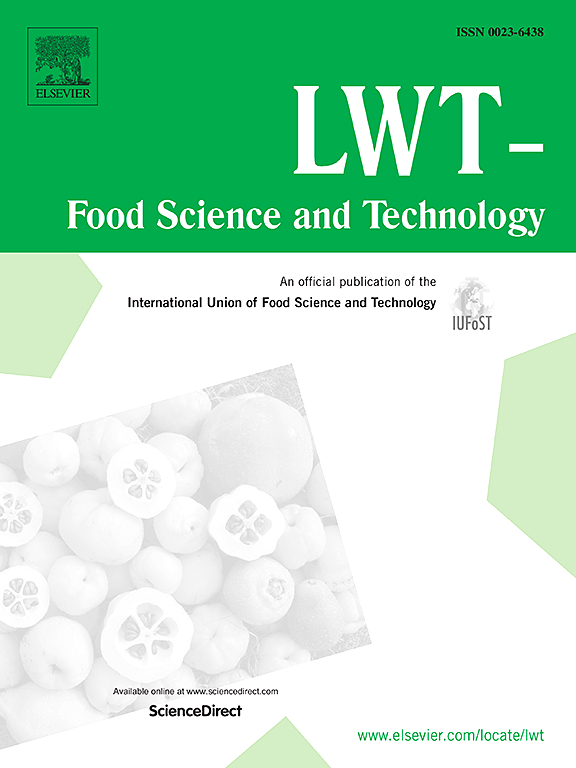Investigation of the dynamic alteration in delayed luminescence property and their correlation with ginsenoside over the classical nine-cycle steaming and drying processing of black ginseng
IF 6
1区 农林科学
Q1 FOOD SCIENCE & TECHNOLOGY
引用次数: 0
Abstract
Black ginseng (BG) is esteemed as a functional food with health advantages and has global popularity. The processing methods of BG products available in the market are varied, result in quality discrepancies. Consequently, a fast and straightforward approach for assessing the processed BG is urgently required. This study utilized the classical nine-cycle steaming and drying method to prepare BG samples. Then, delayed luminescence (DL) and high-performance liquid chromatography were employed to measure the samples. The four photon properties derived from the DL decay curves of the samples exhibited a gradual alteration corresponding to the increasing processing cycles of BG. The composition of 17 monomeric ginsenosides exhibited a comparable sequential alteration, characterized by a progressive decline in the contents of common ginsenosides and a concomitant rise in the concentration of rare ginsenosides. The findings of the correlation analysis indicated a substantial correlation between the DL parameters I0 and Beta and the rare ginsenosides Rg3 (ρ = −0.877 or 0.568), Rg5 (ρ = −0.885 or 0.541), and Rk1 (ρ = −0.866 or 0.512) in BG samples, respectively. These metrics are expected to signify the quality of BG subjected to various processing techniques. Our research presents a unique DL approach, providing a solid scientific basis for the rapid quality assessment of BG products.

求助全文
约1分钟内获得全文
求助全文
来源期刊

LWT - Food Science and Technology
工程技术-食品科技
CiteScore
11.80
自引率
6.70%
发文量
1724
审稿时长
65 days
期刊介绍:
LWT - Food Science and Technology is an international journal that publishes innovative papers in the fields of food chemistry, biochemistry, microbiology, technology and nutrition. The work described should be innovative either in the approach or in the methods used. The significance of the results either for the science community or for the food industry must also be specified. Contributions written in English are welcomed in the form of review articles, short reviews, research papers, and research notes. Papers featuring animal trials and cell cultures are outside the scope of the journal and will not be considered for publication.
 求助内容:
求助内容: 应助结果提醒方式:
应助结果提醒方式:


